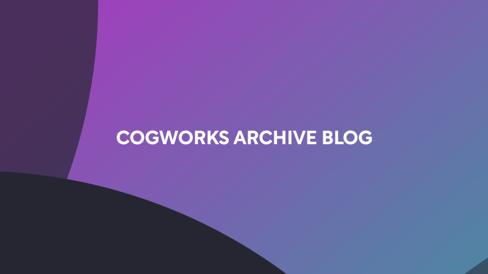Cogworks favourite Scrum meeting - the retrospective.
Hello, youve stumbled into the old Cogblog archives
We've switched our blogging focus to our new Innerworks content, where tech community members can share inspiring stories, content, and top tips. Because of this, old Cogworks blogs will soon be deleted from the site, so enjoy it while you can. A few of these might refer to images in the text, but those have been deleted already sorry. Some of these subjects will return, some aren't relevant anymore, and some just don't fit the unbiased community initiative of Innerworks.
If you'd like to take on this subject yourself please submit a new blog!
Farewell Cogworks Blog 💚
How Do We Use Retrospectives at Cogworks?
In this blog, we’re sharing why retrospectives remain one of Cogworks’ favourite Scrum rituals.
Following the Scrum Guide, “The Sprint Retrospective is an opportunity for the Scrum Team to inspect itself and create a plan for improvements to be enacted during the next Sprint.” In our Agile practice, “inspect and adapt” is one of the most familiar phrases — and retrospectives are at the heart of that. They're about reflecting on what’s working, what could be better, and how we can evolve together.
How Do We Warm Up Our Retrospectives?
Warming up helps ensure everyone is engaged and in the right mindset. At Cogworks, we’ve used:
Candy Love – Skittles, M&Ms, or anything colourful! Each colour prompts a fun question to help team members connect.
Thank You Wall – An appreciation exercise to kick things off on a positive note.
Defining Nirvana – A playful way for teams to align on what a “perfect sprint” looks like.
We keep warm-ups brief — no more than 10 minutes or 15% of the retro time.
How Do We Tailor Retrospectives for More Mature Teams?
We adjust retrospectives to fit team experience and project needs. Over time, we’ve found these formats work particularly well for seasoned teams:
Lego Serious Play – Great for creative, well-bonded teams. We even ran a full Scrum Lego workshop to explore this.
Fishbone Diagram (Ishikawa) – Used to dig into root causes, as long as the team understands the method and its purpose.
Glad / Sad / Mad – Helpful for teams navigating early challenges in new projects.
Liked / Learnt / Lacked – Encourages learning and boosts morale by celebrating progress.
Outcome Expectations – Aligns stable, confident teams on future goals.
Sailboat – Visualises what’s pushing the team forward and what’s holding it back.
Start / Stop / Continue – Still one of the most effective formats, especially early in projects.
Top 5 – Ideal for identifying and prioritising actions.
Tree Retrospective – A format we developed internally to celebrate wins and reflect visually. Team members wrote positives and achievements on sticky notes (leaves), and challenges on the trunk. A great way to close a quarter.
What Retrospectives Work Best for Newer Teams?
We’ve used these to build safety, trust, and shared direction:
Appreciative Retrospective – Focused on positives to build momentum.
Each One Meets All – A round-robin exercise ideal for forming teams.
Pillars of Agile Spiderweb – Highlights strengths and areas for development.
Strengths-Based Retrospective – Empowers teams by focusing on what’s going well.
What Retrospective Works for Everyone?
Scrum Values – We repeat this quarterly or annually. It's a reflective, values-driven approach that suits every team regardless of experience.
What Happens After a Retrospective?
A retrospective is only helpful if it results in action. We've learned that follow-through is key — without it, teams disengage quickly.
We track agreed actions, revisit them during stand-ups or planning, and adjust as needed. Retrospectives should directly inform how the team moves forward.
Cool links:
- Agile
- Retrospective
- Scrum

Innerworks and Cogworks are proud to partner with Community TechAid who aim to enable sustainable access to technology and skills needed to ensure digital inclusion for all. Any support you can give is hugely appreciated.
